In June 2010, the ‘Lamlamey’ was the talk of Gangtok. A child’s photograph, taken in the Banjhakri Waterfalls was the main reason for the discussion. The blogspot ‘Proud to be a Sikkimese’featured an article- “Ghostly image behind a boy at a waterfall!” (2010).[1] The horrifying story which I can recall till today goes as follows: “The boy had visited the Banjhakri Falls with his parents and was initially enjoying and playing around but suddenly he requested his parents to leave and go back home. On their way back home, the child fell sick, and later during the night, he passed away. Some days after his passing, when his photograph at the Banjhakri Falls was developed, a faint-looking image of the Lamlamey was visible”. It is said that the Lamlamey resides near the river feeding on children. People said, “She must have eaten the child’s soul, that's why he died”.
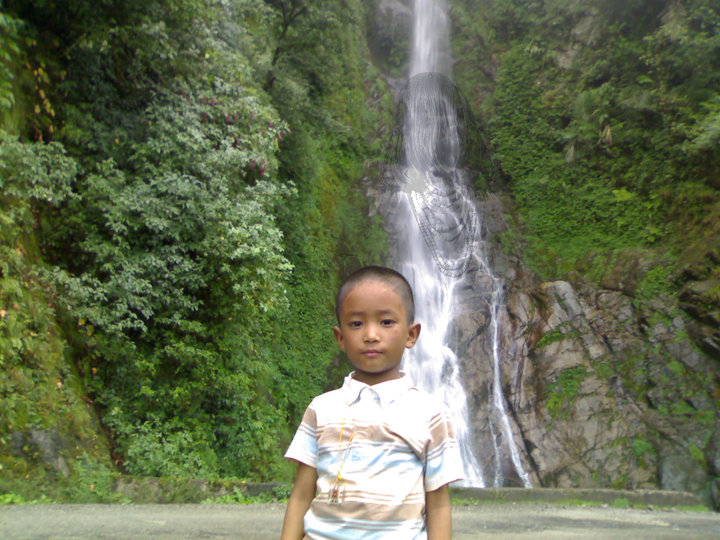
The photograph soon went viral on social media, it seemed like proof of Lamlamey’s terrifying existence. Having grown up hearing various stories of the Lamlamey, it was scary to think that she resides in the Banjhakri Waterfalls. However, there are no data reports on the decline of tourists or customers in the park after the incident. Yet, as a local, it was well-known that the park was closed for some years. Later, the park was relaunched and equipped with various adventure sports. No investigation has been done in regards to the photograph, of who the child is and whether the child died or not. Perhaps, no one even knows who shared the photograph and how it went viral. Nonetheless, what this incident brought to the surface was the almost forgotten oral folk tale of the Banjhakri and Lamlamey.
Banjhakri and Lamlamey: The Shamanic Couple
‘Shamanism’ is one of the core beliefs practiced by many indigenous communities in different forms and styles across Sikkim, Darjeeling, Kalimpong, and Nepal. Shamans or Jhakris are the traditional faith healers, who are either blessed or learn the practices to heal people. There are various types of shamans according to popular understanding: shamans that run through the family line, Bhuikhuttae (without any teacher) an individual who becomes a shaman by acquiring the requisite power, and those who learn the shamanic practice from a teacher or a guru. Among them, the most sacred and powerful shamans are those the Banjhakri has taught. Banjhakri is a mythological character, who is perceived as the keeper of knowledge that can save mankind. Journalist Dutta (2023) describes Banjhakri as a “short, wild, ape-like trickster believed to be a descendant of the Sun. His ears are large, and long matted hair covers his entire body, except for his face and palms, and he plays a golden frame drum called the dhyāngro”.[2]
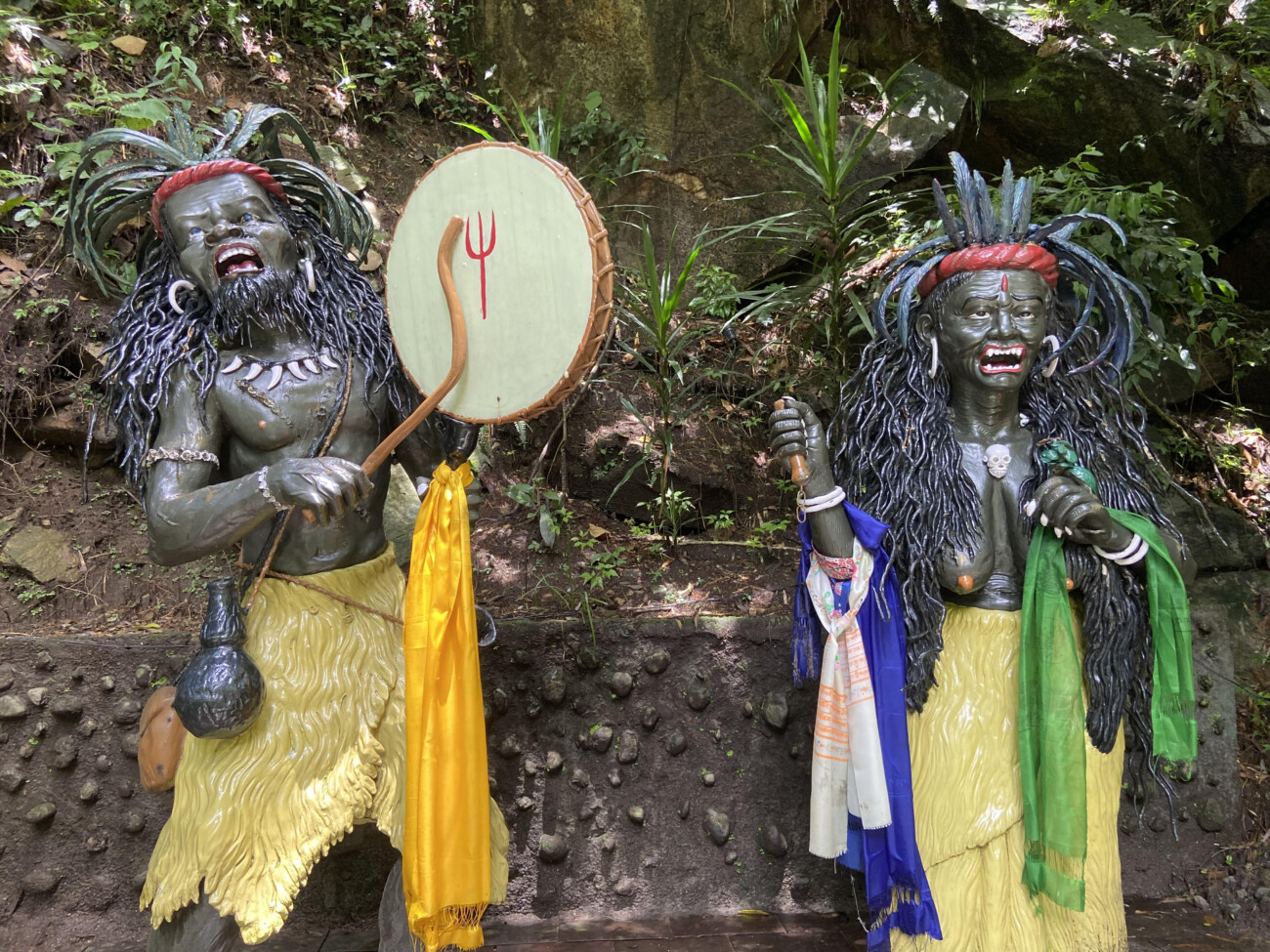
Even today, it’s like alongside our modern lives, a parallel world constructed of these stories of spiritual beings guiding and protecting us exists simultaneously. Henceforth, whenever any information on the Banjhakri or the Lamlamey surfaces people believe it.
The name Banjhakri is suggestive of where he lives, Ban means forest and Jhakri means shaman. Banjhakri is always perceived to be the benevolent father figure whose knowledge can save humans from dark energy; he teaches natural medicine and has the power to trick his wife Lamlamey into saving his disciples. Lamlamey, his wife, is only mentioned through the Banjhakri, she is notably described as way more dangerous than her male counterpart. For many people in the hills, these mythical characters are not unreal. The collective imagination/ collective psyche believes these mythical figures are real, living in a parallel universe unknown to us. Even today, it’s like alongside our modern lives, a parallel world constructed of these stories of spiritual beings guiding and protecting us exists simultaneously. Henceforth, whenever any information on the Banjhakri or the Lamlamey surfaces people believe it.
Lamlamey: Her Story and Androcentric[3] Perspective
Common narratives, legends, or folk tales revolving around the Shamanic couple narrate that Banjhakri would “abduct a child with no wounds and marks, then teach and equip him with powers that can heal mankind, basically train him in witchcraft” (Praful, 2020). Afterward, he would return the child to the human world, usually, such training periods would last for a month. Throughout this learning period, the child would always have to be protected by the Banjhakri from the Lamlamey eager to eat the child. An unnamed guest author writing in the ‘Darjeeling Chronicles’ (2019) gives us the outline of these stories or legends, which always follow this narrative:
“Ban-Jhakri-Ni[4] ley khede bhanae, ukaloo na bhagnu, oraloo bhagnu.” (Never run uphill, always dash downhill). An innocent soul would ask why. After a slight hesitation, a crude answer follows; Ban-Jhakri-Ni ko Dudh lamoo-lamoo huncha ukaloo khed-da ghati ma beri halacha, tara oraloo khed-da tyoo bhari bhayera affai ladcha (her breasts are so huge that she can't chase children downhill as it would make her fall, but uphill she would fold it over her neck). Such was the innocence of childhood, huge breasts to the ground sounded logical. [5]
The description of the Lamlamey is scary but also creates an exotic and hypersexual image. During storytelling sessions, a slight hesitation always precedes the description of the Lamlamey. The over-sexualization of a female character is not new to tribal communities, women ghosts or deities are often seen as ‘dangerous bodies’ with a hypersexualized description.
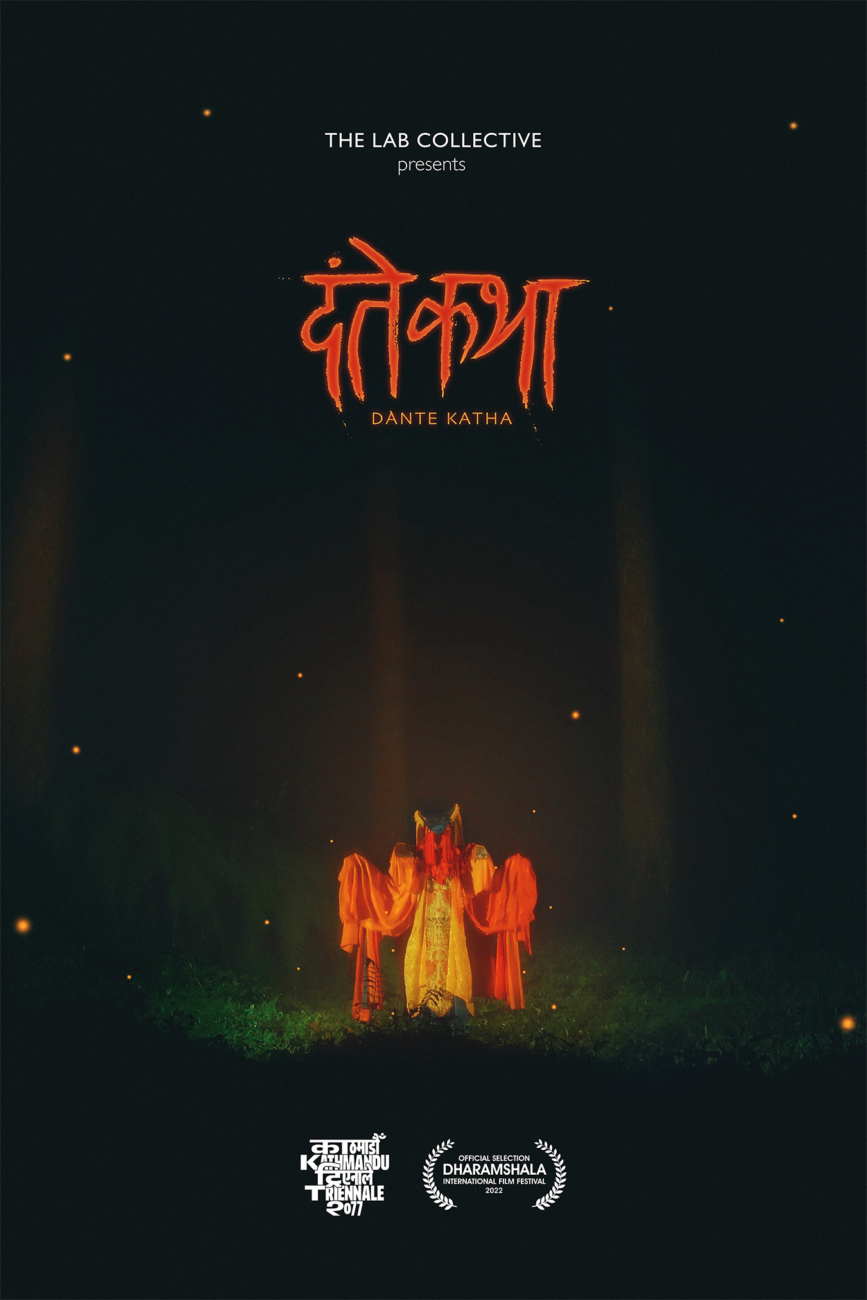
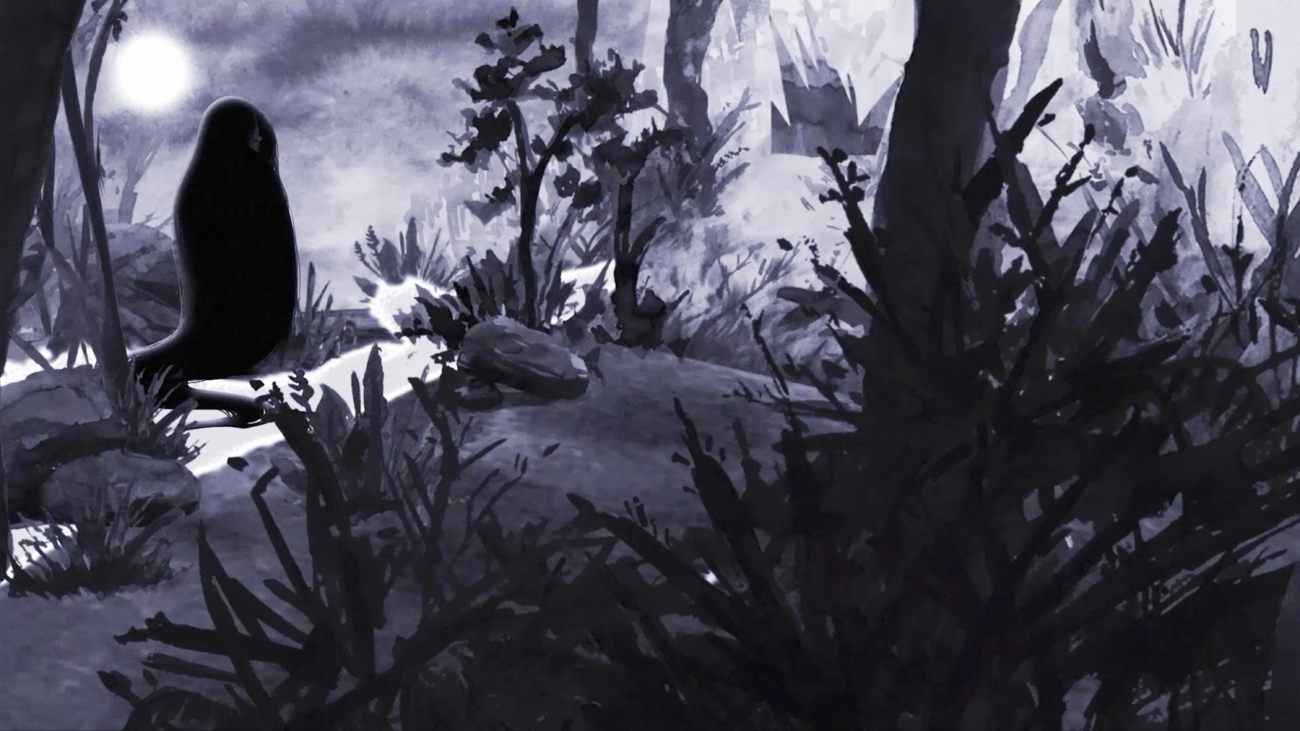
This story has been told over and over again. Set in the streets of Kalimpong, Dishant Pradhan’s mixed medium Nepali film Dante Katha (Oral tales) follows the same trajectory. The film begins with a conversation between the grandmother and her granddaughter. The grandmother says, “My warnings against you and your friends to not whistle during the evening or sunset was because of this reason. Your missing brother might be abducted by the Banjhakri, who usually whistles during the evening. It is said his wife Banjhakrini or Lamlamey is the one who eats children” (self-translation). She also mentions that Lamlamey’s breasts are “usually long and big”. The known story of the Lamlamey is interwoven in this narrative.
The status of women has become better, but many violent and discriminatory practices against women like their ‘otherization’ are rooted in various traditional practices and continue to persist. Perhaps, folktales or legends are not limited to comprehending a community’s history and cultural practices but also help us to acknowledge various spectrums such as gendered practices and symbolic violence deeply rooted within the community.
The description of the Lamlamey is scary but also creates an exotic and hypersexual image. During storytelling sessions, a slight hesitation always precedes the description of the Lamlamey. The over-sexualization of a female character is not new to tribal communities, women ghosts or deities are often seen as ‘dangerous bodies’ with a hypersexualized description. The ‘Churael’, ‘Dayan’, and even the Goddess ‘Kali’ of the Hindu pantheon often associated with the occult are described as bloodthirsty and dangerous. Among the three, the image of ‘Kali’ bears some resemblance with the Lamlamey. Tobler (2001) describes Kali as having “Red eyes, matted hair, pendulous breasts, emaciated body, blood dripping from her mouth, human heads around her neck and waist, dead infants hanging as earrings from her ears” [6] , which resonates with the Lamlamey’s image.Yet, the power and respect that is offered to Kali as a deity, maternal redeemer, and protector is nowhere to be found for Lamlamey. Here we see the “gender relations, undoubtedly reinforcing the patriarchal and entirely androcentric conception of uncontrolled - and therefore threatening and dangerous - female sexuality” (Tobler, 2001).[7] Such practices lead to the birth of characters such as the Lamlamey, who is threatening, dangerous, and free. These initiate debates on whether Indigenous society can be a way forward regarding gender relations. The status of women has become better, but many violent and discriminatory practices against women like their ‘otherization’ are rooted in various traditional practices and continue to persist. Perhaps, folktales or legends are not limited to comprehending a community’s history and cultural practices but also help us to acknowledge various spectrums such as gendered practices and symbolic violence deeply rooted within the community.
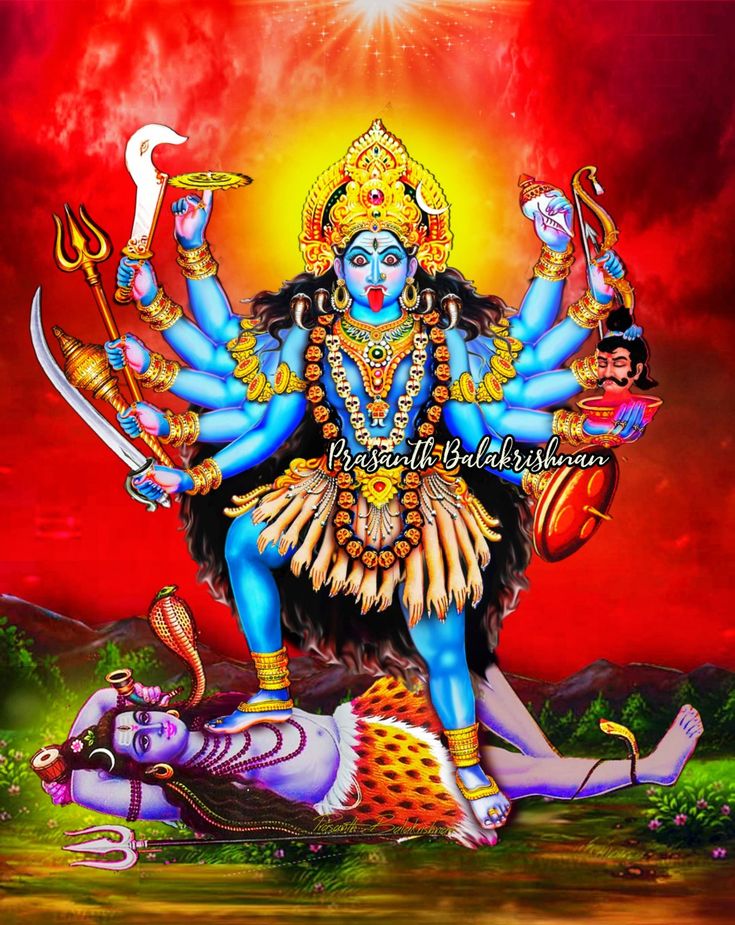
Figures such as that of Lamlamey or Kali project the need to control the ‘other’ or women, for it is the lack of control that results in such horrifying images. In comparison both the characters are free, independent, and dominant. Both have husbands, who are often considered to be the protectors of the world. Shiva and Banjhakri are protectors with powerful and fierce consorts who on different scales work for the well-being of society, these male figures are responsible for controlling the women figures. Prof. Tobler (2001) highlights that for various societies, be it the West or Asia, women’s role in society is underpinned by patriarchal and androcentric convictions. Such androcentric perspectives dehumanize women, building an identity of the ‘Other’ and especially that of the demon.
It stands very true that the Banjhakri receives far more attention than Lamlamey. The other name of Lamlamey is the Banjhakrini, if broken down the syllable ‘ni’ means a female. Therefore, a female version of Banjhakri, yet irrespective of having numerous differences, she is only perceived as his counterpart.
The dehumanization of women is deeply rooted in religion, especially in Hinduism. Texts such as the Manusmriti mention, “Women and female sexuality are dangerous if not controlled by a male and the confines of marriage and motherhood” (Tobler, 2001).[8] Hence even the stories and mythology surrounding them are seen as acceptable. For such characters, their counterpart takes the first hand. Kinsley (1986) insists that just like the male deities, each of the numerous and diverse goddess figures - whether consorts of gods or independent of any male deity - has individual, coherent mythology and theology of her own, although the goddesses have received far less attention than their male counterparts in religious studies scholarship and Hindu theology (Tobler, 2001). It stands very true that the Banjhakri receives far more attention than Lamlamey. The other name of Lamlamey is the Banjhakrini, if broken down the syllable ‘ni’ means a female. Therefore, a female version of Banjhakri, yet irrespective of having numerous differences, she is only perceived as his counterpart.
Lamlamey: Contemporary Popular Culture Representation
Sonia Thapa’s podcast ‘Banjyakri- Part One and Two’ features Nino, a curious and mischievous boy, who is passionate about stories. The twist arises when Nino’s Boju (grandmother) tells him, “Banjhakri is not interested in old ladies like me but in children like you. He will catch you, chop your head, and drink your blood. While his wife Lamlamey is the one who would save the child by hiding it”. This difference in the known story gives Lamlamey a human characteristic. Furthermore, Nino and his friends draw the figures of Banjhakri and Lamlamey. Upon finding the drawings, the history teacher Rekha slaps Nino, since the drawing of Lamlamey was drawn ‘explicitly’ well. Miss Rekha was pregnant and she thought it was her image. This also exhibits how popular folktales picture the female body, often developing a derogatory image and limited to the over-sexualization of certain female body parts.
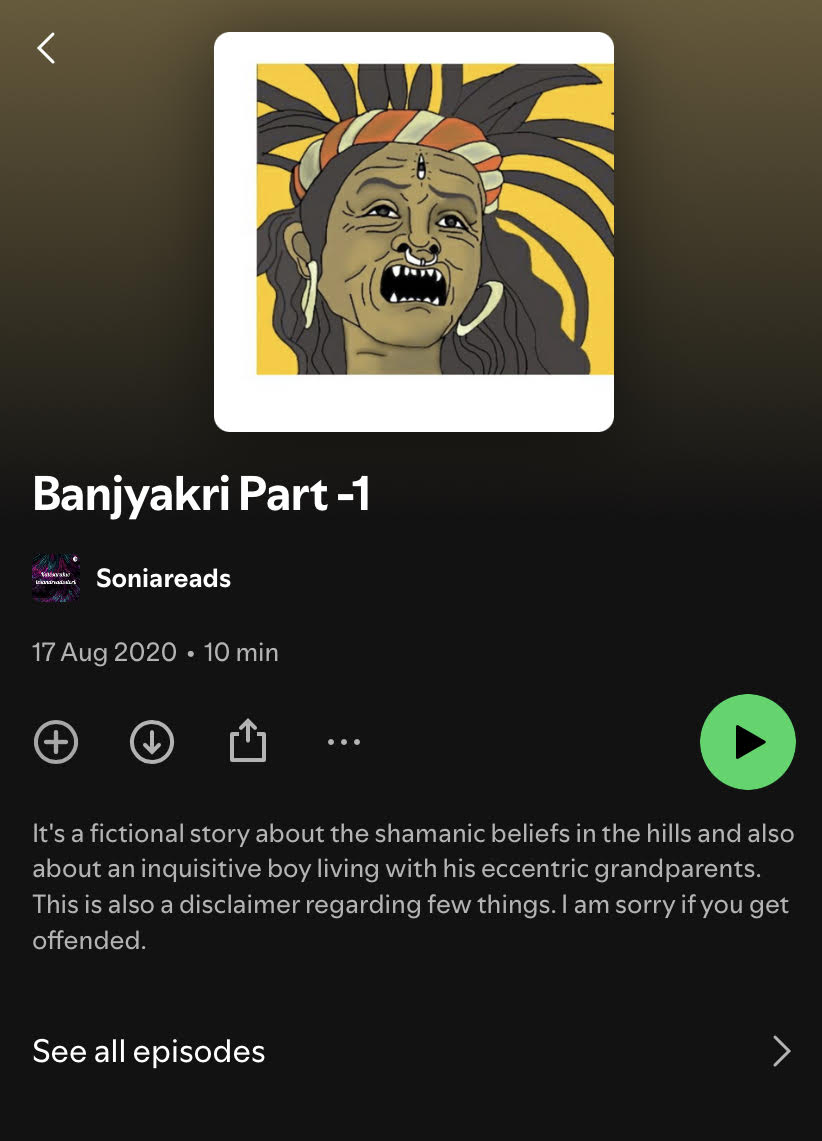
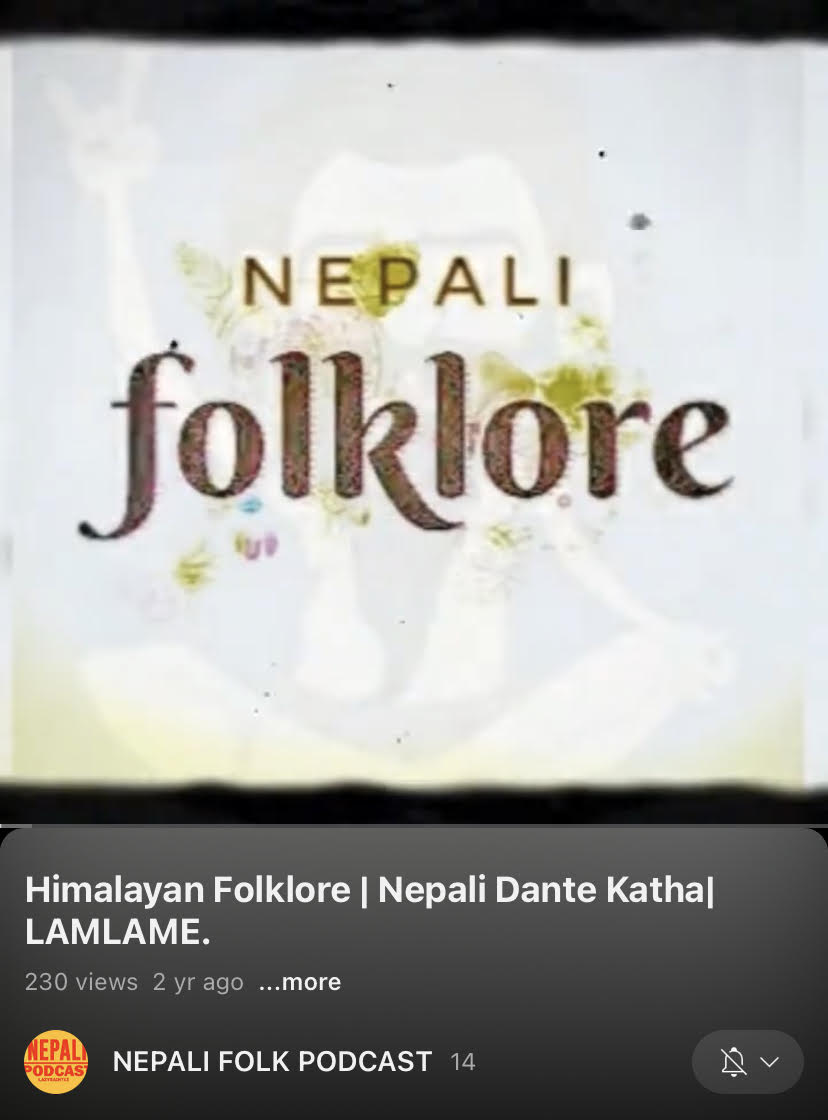
Another fictitious story in the Nepali language on YouTube titled ‘Himalayan Folklore Nepali Dante Katha: Lamlame’ by Nepali Folk Podcast narrates the origin and alludes to the birth of Lamlamey. “The mother goes to fetch water in a river, and her son playing near the river drowns. In haste, she leaves the daughter near the riverside and runs to save her son. After failing in her attempt, she runs for help. But upon reaching the riverside she found out that her daughter was also missing. After narrating the incident to her husband, all the villagers rush to the riverside in search of the children. Unable to locate them, the villagers feel that the mother herself might have done something wrong to the children. They blamed the wife and as a part of punishment, they threw her in the river with her hands and legs tied. It is believed that the innocent woman thrown in the river turned into the Lamlamey.”
Lamlamey’s pendulous breasts is also an image that projects her as a bad mother or a failed mother. These stories of Lamlamey are not as popular as those with her derogatory representation. The common legend always has a narrative of Banjhakri as the teacher of shamanic practices and the giver. Meanwhile, Lamlamey is seen as a woman who portrays rage, violence, mental illness, and eccentricity.
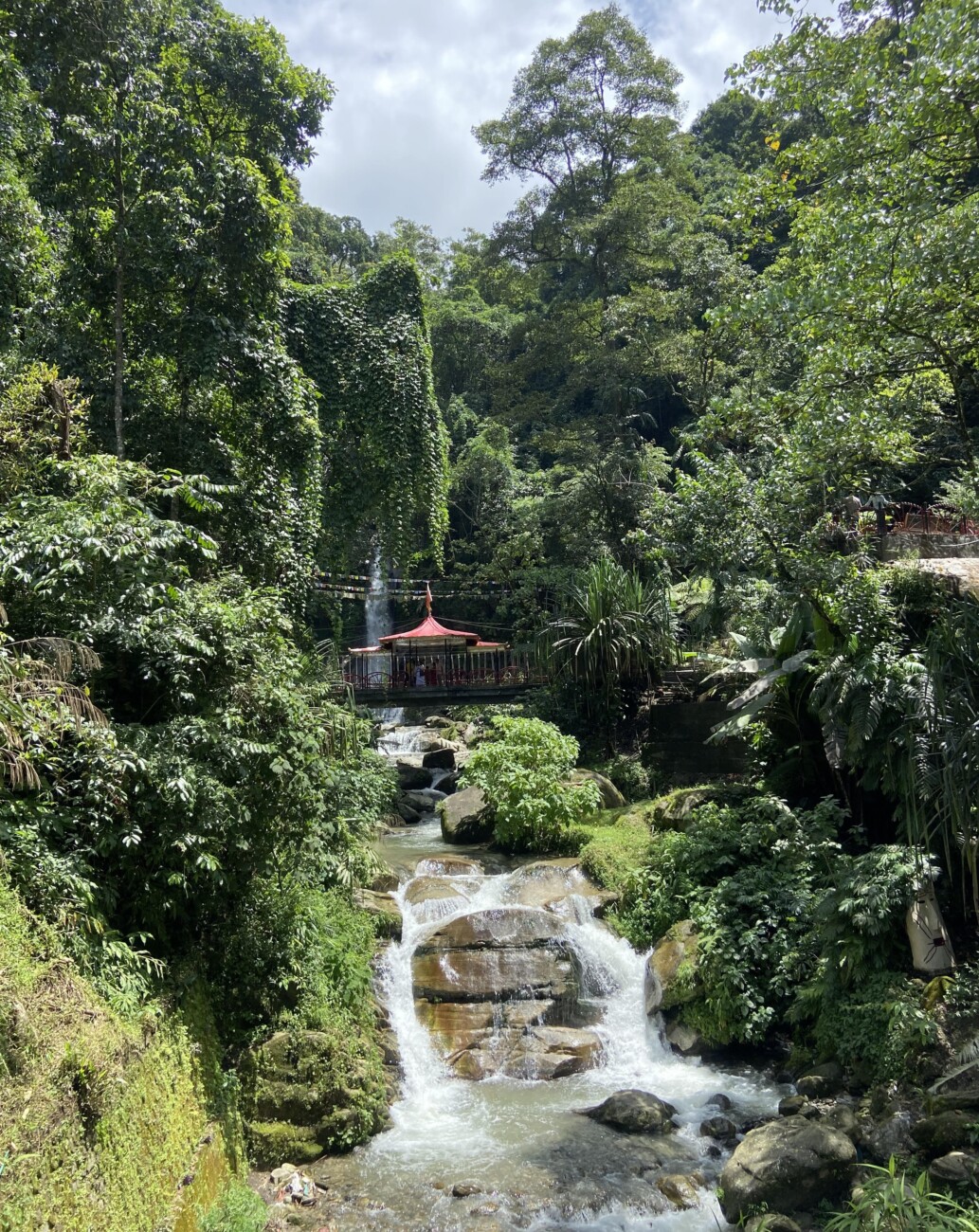
Unlike other stories, this story was the first to narrate the Lamlamey's origin. It also connects to Sonia’s story where she mentions “Lamlamey hiding the children”, maybe she remembers her lost children and seeks to protect other children. Furthermore, it also answers why the Lamlamey inhabits “rivers and waterfalls”, maybe after her unjust drowning, she is tied to water bodies. Nepali Folk Podcast’s Lamlamey tale also mentions that “The Lamlamey was a lactating mother making her breasts bigger than usual, additionally, having lost her children in the river she did not have anyone to breastfeed, resulting in big breasts”. Lamlamey’s pendulous breasts is also an image that projects her as a bad mother or a failed mother. These stories of Lamlamey are not as popular as those with her derogatory representation. The common legend always has a narrative of Banjhakri as the teacher of shamanic practices and the giver. Meanwhile, Lamlamey is seen as a woman who portrays rage, violence, mental illness, and eccentricity.
Lamlamey: Rethinking Stories
The rise of popular media has provided a platform to revisit old traditions, giving us a space to rethink our practices alongside timeless myths and folktales. Myths and folktales not only aid in the creation of an identity but also help us rethink why certain practices are rooted in society. Figures such as Lamlamey, Dayaan, and Churel, whose stories have filled our childhood have no fixed point of origin. Their stories either emerged from thin air or were ancient legends whose history cannot be traced. What these figures elucidate is the hyper-sexualization of the female body and the exoticization of private parts (such as the breasts).
Drawing upon the androcentric perception towards women, their bodies are one of the primary reasons which lead to the creation of such characters. Although the tale of Lamlamey is concerned with the faith and belief system of the shamans, I think there is more to it. Hence, we need to rethink and challenge such stories with empathy to decode the prevalent structures and understand the Lamlamey.
The Lamlamey, originally part of a cautionary tale circulating in the community to discipline children is being re-imagined. Now, new representations (stories and films) are being created, allowing us to revisit this childhood figure. In the case of Lamlamey, the alternative popular media is humanizing her existence. The amalgamation and the differences in Lamlamey’s story can help us interrogate her significance, and recontextualize the feminine identity. Drawing upon the androcentric perception towards women, their bodies are one of the primary reasons which lead to the creation of such characters. What is terrifying about the Lamlamey is her ‘body’, a symbol of her maternal excess (an excessive eagerness to protect the child) or her maternal irresponsibility. The Lamlamey is perceived as a woman who flouts maternal expectations and values of care, due to this her representation carries the anxiety surrounding women’s bodies, particularly that of maternal bodies. Although the tale of Lamlamey is concerned with the faith and belief system of the shamans, I think there is more to it. Hence, we need to rethink and challenge such stories with empathy to decode the prevalent structures and understand the Lamlamey.
Bibliography
- Tobler, Judy. "Goddesses and Women's Spirituality: Transformative Symbols of the Feminine in Hindu Religion." Journal for the Study of Religion 14.2 (2001): 49-71.
- Dutta, Shristi. “Banjhākri And Banjhākrini of Sikkim: These Shamans Kidnap Children, But Not for Nefarious Reasons”. India Times.18/ 8/2023.
https://www.indiatimes.com/news/india/banjhakri-and-banjhakrini-of-sikkim-these-shamans-kidnap-children-but-not-for-nefarious-reasons-604366.html - Proud to be a Sikkimese. ‘Ghostly image behind a boy at a waterfall!! 22/2/2022. https://sikhim.blogspot.com/2010/06/ghostly-image-behind-boy-near-ban.html
- Darjeeling Chronicle. ‘Growing up in the Mountains and the Stories of Jogi’s, Jhakri, and Rakey-Bhoot’. 25th/ 11/ 2019.
https://thedarjeelingchronicle.com/growing-up-in-the-mountains-and-the-stories-of-jogis-jhakri-and-rakey-bhoot/ - Spotify podcast: Banjyakri part 1 and 2, Soniareads channel by Sonia Thapa (17/08/2020 and 18/08/2020)
https://open.spotify.com/episode/0lCzHwlmm4TgSF2zNjuHm4?si=9xnS0GsVQRqbWYaKd7cj2w - Youtube Podcast: Himalayan Folklore | Nepali Dante Katha| Lamlame by Nepali folk podcast. 2nd/2/2022.
- Film: Dante Katha by The Lab. Directed by Dishant Pradhan and Arunatpal Chanda. Shown in Kathmandu Triennale, Dharamshala IFF, London Himalayan Short Film Festival 2024. (First watched at ‘Oral Stories Workshop’ in Kalimpong 2022)
Additional Sources
- Denjongpa, Anna. ‘Lamas and Shamans of the Sacred Hidden Land’. Sikkim Project. May 2022.
https://sikkimproject.org/lamas-and-shamans-of-the-sacred-hidden-land/ - Austin, Sara. "Sita, Surpanakha, and Kaikeyi as political bodies: representations of female sexuality in idealized culture." Journal of Graphic Novels and Comics 5.2 (2014): 125-136.
- Peters, Larry G. "The calling, the yeti, and the ban jhakri (" forest shaman") in Nepalese shamanism." Journal of Transpersonal Psychology 29. (1997): 47-62.
- Prafull. ‘The Legend of Banjhakri’. The Wandering Soul. 3/3/2022. https://www.thewanderingsoul.in/2020/03/the-legend-of-banjhakri.html?lr=1713753340362
- Sigdel, Sangita. "Eastern representation in Western arts: Exoticization, eroticization, and dehumanization." Eroticization, and Dehumanisation (December 5, 2020) (2020).
- Thomas, Jeannie Banks. "Gender and Ghosts." Haunting Experiences: Ghosts in Contemporary Folklore (2007): 81-110.
- Team Mithila. ‘Banjhakri Water Falls in Gangtok–A prime attraction for tourists’. 13th/ July/ 2016. https://www.mithilaconnect.com/banjhakri-water-falls-in-gangtok-a-prime-attraction-for tourists/
[1] https://sikhim.blogspot.com/2010/06/ghostly-image-behind-boy-near-ban.html
[2]https://www.indiatimes.com/news/india/banjhakri-and-banjhakrini-of-sikkim-these-shamans-kidnap-children-but-not-for-nefarious-reasons-604366.html
[3] The prevalent masculine viewpoint
[4] The Lamlamey is also known as the Ban-Jhakri-Ni (Female version of Ban-Jhakri)
[5] https://thedarjeelingchronicle.com/growing-up-in-the-mountains-and-the-stories-of-jogis-jhakri-and-rakey-bhoot/
[6] Tobler, Judy. "Goddesses and Women's Spirituality: Transformative Symbols of the Feminine in Hindu Religion." Journal for the Study of Religion 14.2 (2001): 61.
[7] Tobler, Judy. "Goddesses and Women's Spirituality: Transformative Symbols of the Feminine in Hindu Religion." Journal for the Study of Religion 14.2 (2001): 49-71.
[8] See Tobler, Judy. "Goddesses and Women's Spirituality: Transformative Symbols of the Feminine in Hindu Religion." Journal for the Study of Religion 14.2 (2001): 49-71.
Avinam Manger is a High school English Literature Teacher at Taktse International School Sikkim. Previously, he was a Young India Fellow Batch of ‘24 at Ashoka University and holds an MA in English Literature from Sikkim University. As a queer artist, he is exploring art and academia to study indigenous practices through folk literature. He has participated in projects like Constructing Homelands 2021 (KHOJ), Queer’s Writing Room 2023 (The Queer Muslim Project and US Consulate Mumbai), and is currently a Mirror Fellow (Maraa Collective). He bagged the 2nd runner-up at the National Youth Parliament Festival 2021 and represented India in the Virtual Commonwealth Youth Parliament in 2021. Avinam finds solace and happiness in simple pleasures, such as tea, poems, and meaningful conversations.

